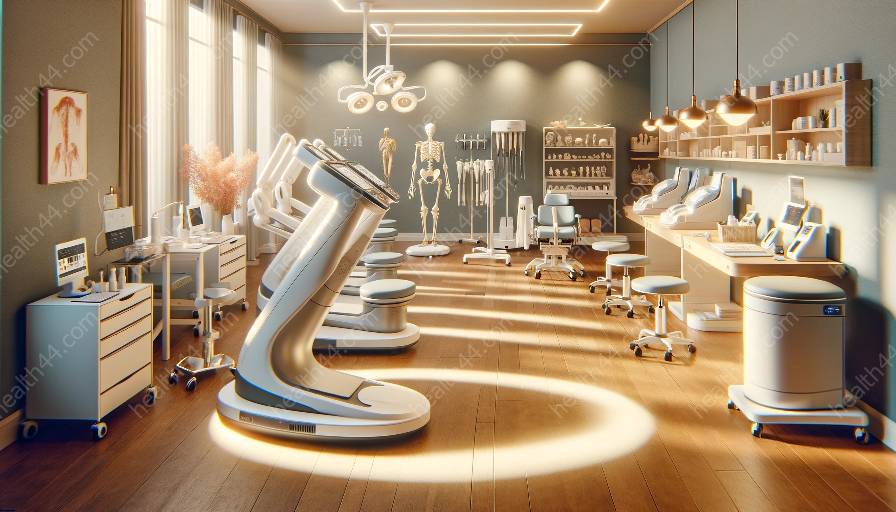Braces and supports are essential orthopedic devices used to provide stability, support, and protection for injured or weakened body parts. These devices encompass a wide range of products designed to address various medical conditions, ranging from sports injuries to chronic musculoskeletal disorders. This comprehensive guide will delve into the different types of braces and supports, their significance in orthopedic care, and their compatibility with orthopedic equipment and medical devices and equipment.
Understanding Braces and Supports
Braces and supports are external devices that are worn to provide support, stability, and protection to specific body parts. They are commonly used in orthopedic care for injuries, post-operative recovery, and chronic conditions such as arthritis. These devices are designed to restrict movement, alleviate pain, and promote healing, ultimately helping patients regain function and mobility.
There is a wide variety of braces and supports available, each tailored to address specific anatomical areas and medical conditions. Common types of braces and supports include:
- Knee Braces
- Ankle Supports
- Wrist Splints
- Back Braces
- Shoulder Supports
- Elbow Braces
Role of Braces and Supports in Orthopedic Care
Braces and supports play a crucial role in orthopedic care by providing stability, reducing pain, preventing further injury, and promoting healing. These devices are often recommended by orthopedic specialists to manage a wide range of conditions, such as sprains, strains, arthritis, ligament injuries, tendonitis, and post-operative rehabilitation. When used as part of a comprehensive treatment plan, braces and supports can significantly improve patient outcomes and quality of life.
Compatibility with Orthopedic Equipment
Braces and supports are highly compatible with various orthopedic equipment, as both are integral components of orthopedic rehabilitation and treatment. Orthopedic equipment such as crutches, walking aids, and physical therapy devices are often used in conjunction with braces and supports to facilitate safe mobility, enhance recovery, and promote functional independence. The compatibility of braces and supports with orthopedic equipment ensures holistic care for individuals with musculoskeletal injuries or conditions.
Significance in Medical Devices and Equipment
In the realm of medical devices and equipment, braces and supports serve as fundamental tools for managing musculoskeletal disorders and injuries. These devices contribute to the broader ecosystem of medical equipment by addressing the specific needs of patients with orthopedic conditions. Whether it's in sports medicine, rehabilitation centers, or home care settings, braces and supports are indispensable in promoting patient well-being and facilitating recovery.
Conclusion
Braces and supports play a vital role in orthopedic care and are closely linked to orthopedic equipment and medical devices and equipment. Their diverse applications, ranging from injury management to chronic condition support, make them indispensable tools in the field of orthopedics. By understanding the various types and significance of braces and supports, healthcare professionals and patients alike can appreciate their value in promoting mobility, alleviating pain, and facilitating optimal recovery.


